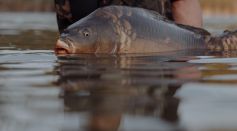ENVIRONMENT & CLIMATE

Inevitable Mass Extinction Event Due to Human Activity is Higher than What Wiped the Dinosaurs
Deadly Stonefish: Scientists Unlock Mysteries Behind This Toxic Fish's Venom
El Niño Phenomenon, Ecosystem Changes in Africa Drove Human Evolution
Bees at Work: Watch How They Join Forces to Unscrew Soda Bottle

Whales and Fishes Absorb Greenhouse Gases, Reduce Atmosphere Emissions
Rare Iron Mineral Found in the Teeth of a "Wandering Meatloaf" in a First

Mosquito Facts: Why They Buzz on People's Ear
Duetting Songbird Mute Their Partner’s Musical Mind So They Can Stay in Sync, Research Reveals

Surprising Discovery of "Harry Potter" Chocolate-Like Frog Species in New Guinea Stuns Scientists

Beer Waste Plus Manure Makes Safer, Greener Pesticides

Global Warming Leads to "Watershed" 1.5°C Increase, UN Weather Arm Warns
How International Space Station Helps Experts Study Climate Change on Earth

High-Tech Earring for Cows in Wyoming Ranches Transfers Real-Time Data via Bluetooth
Great Whip Spider Boom: Are These Exotic Arachnids a Spider or Tailless Scorpions?
Most Popular

3I/ATLAS: The Truth Behind the Mysterious Interstellar Object Now Targeted by NASA and UN Teams

Hellfire Missile Video Reveals MQ-9 Reapers Being Used for Aerial Combat

Nvidia's Jetson Thor Could Make Humanoids Smarter Than Ever

Cyber Attack on Jaguar and Land Rover Cripples UK Operations: 1 October Earliest Restart as Deliveries Disrupted Worldwide




